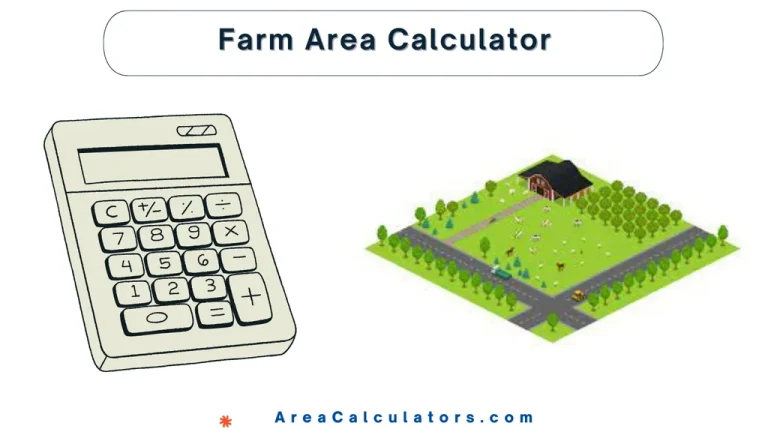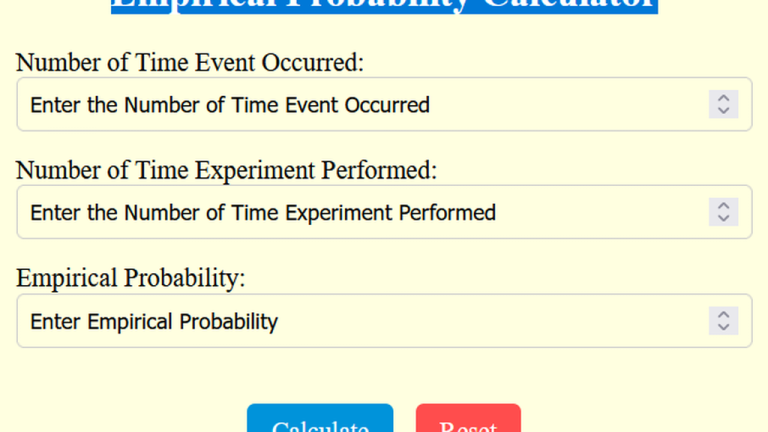Well Volume Calculator
To determine the volume of a well, multiply the area of the circular cross-section by the height difference between the top and bottom measurements of the well.
To determine the volume of a well, multiply the area of the circular cross-section by the height difference between the top and bottom measurements of the well.
The Well Volume Calculator is a practical tool for calculating the volume of a well based on its dimensions. Whether you’re assessing water storage in a well, calculating oil well capacity, or determining volume for environmental studies, this calculator provides accurate results.
WV = π × r² × (H₂ − H₁)
| Variable | Description |
|---|---|
| WV | Volume of the well |
| r | Radius of the well |
| H₂ − H₁ | Height difference in the well |
Example 1: Calculating Well Volume in Liters
| Step | Value |
|---|---|
| Radius (r) | 1 meter |
| Height Difference (H₂ − H₁) | 20 meters |
| Volume (WV) | π × 1² × 20 = 62.83 m³ |
| Convert to liters | 62.83 × 1,000 = 62,830 L |
Example 2: Calculating Well Volume in Gallons
| Step | Value |
|---|---|
| Radius (r) | 2 feet |
| Height Difference (H₂ − H₁) | 50 feet |
| Volume (WV) | π × 2² × 50 = 628.32 ft³ |
| Convert to gallons | 628.32 × 7.48 = 4,699.76 gal |
The Well Volume Calculator is a versatile tool that helps determine the volume of a well, whether for water, oil, or other purposes. It aids in calculating the storage capacity of wells in units like gallons or liters, depending on the user’s requirements.
This tool is beneficial for those managing water supply systems, evaluating well performance, or planning for irrigation and industrial applications.
It can handle various well shapes and dimensions, offering insights into both wet and dry wells. By inputting parameters such as depth, diameter, and casing size, users can estimate the total volume efficiently.
Applications of the Well Volume Calculator extend to understanding groundwater capacity, planning well maintenance, and managing resources for households, farms, or industries.
In essence, the Well Volume Calculator is an essential resource for accurately gauging well capacity. It simplifies calculations, aiding in efficient resource management and informed decision-making for diverse water and oil applications.
To calculate the heat of fusion, divide the heat energy (q) required to change a substance’s phase by its mass (m). The Heat of Fusion Calculator is a valuable tool for determining the heat required to melt a solid or freeze a liquid without changing its temperature. This property, known as the latent heat…

First, multiply the total area of the land by the usable land percentage. Then, divide the result by 100 to get the usable farm area in acres, hectares, or square meters. A Farm Area Calculator helps calculate the usable area of a farm based on the total size of the land and the percentage that…
To convert pounds to pints, multiply the weight in pounds by the conversion factor (CF), which varies based on the substance being converted. The Pounds to Pints Calculator is a versatile tool used to convert weight (pounds) to volume (pints) for various substances such as water, strawberries, honey, and more. Since the conversion depends on…

Divide the rise by the run, then multiply by 100 to get the percent slope. The Percent Slope Calculator simplifies determining the steepness of a slope as a percentage, which is useful for construction, landscaping, and road design. This tool translates rise-over-run measurements into a percentage that represents the incline. Understanding slope percentage is critical…

Divide the number of observed outcomes by the total number of experimental outcomes to determine the empirical probability. The Empirical Probability Calculator is a useful tool for determining the likelihood of an event based on actual experimental data. Unlike theoretical probability, which is based on predictions, empirical probability uses real-world observations. This calculator is widely…

To calculate the water-to-cement ratio, divide the weight of the water by the weight of the cement used. The Water to Cement Ratio Calculator is a crucial tool for concrete mix design, helping to achieve the desired strength and durability. A proper water-to-cement ratio ensures a balance between workability and the concrete’s ability to resist…